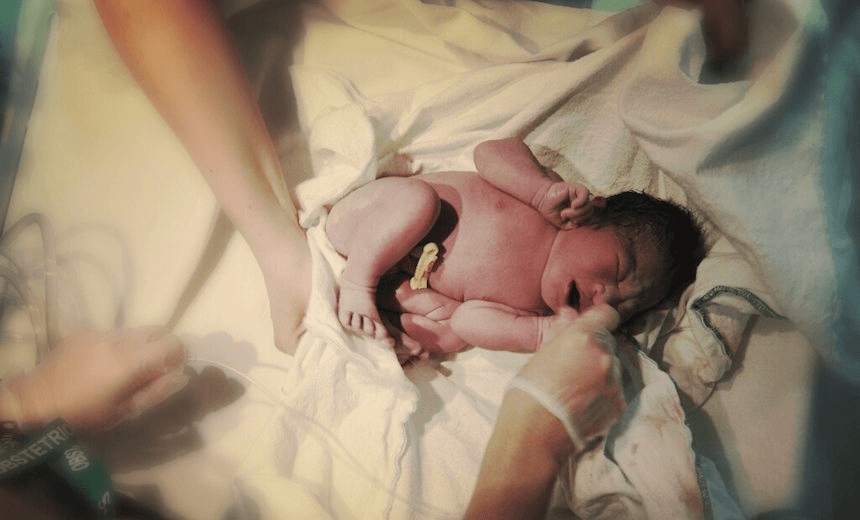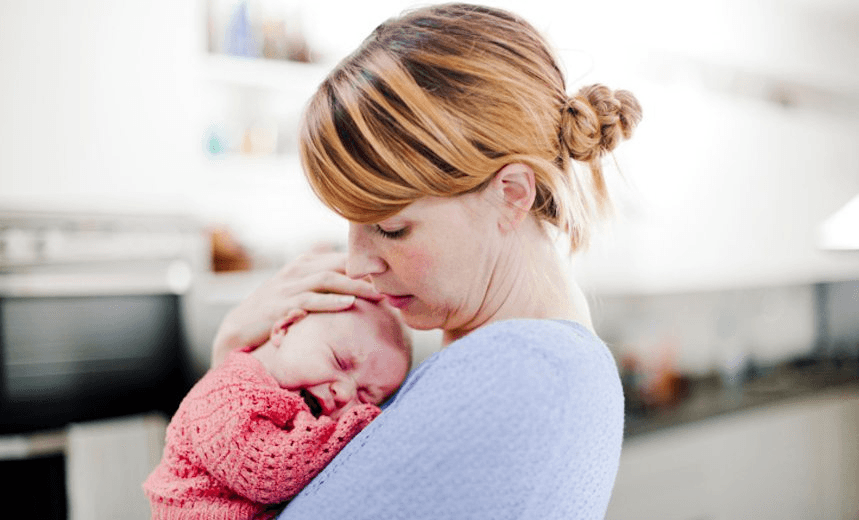Giving birth can be a traumatic experience for some women and when that happens recovery can take a long time. Dana Chandler-Brown writes about her personal experience of birth trauma, and why we should be doing more to support mothers going through it.
This post talks about birth trauma, a very real issue in New Zealand. I hope that this post will give voice to women who have suffered from this or are currently working through their journey and will raise awareness of the topic. Please be aware that this article may be triggering for mothers who have survived traumatic births.
When I decided I wanted to write this post I did not want it to just be my story. I wanted it to be the collective voices of other mothers who had lived through birth trauma – Post Traumatic Stress Disorder (PTSD) that occurs after childbirth. If a mama reading this is going through something similar, please know this:
You are not alone.
Your experience is valid.
You are so entitled to feel what you’re feeling.
Before I had my son, I had never been frightened of birth. In fact, I was in awe of it. Being a student midwife, I had been lucky enough to watch the power of mothers in their birth zone: deep within themselves, swaying rhythmically with their contractions. I’d had the privilege of watching elective caesareans. I’d seen the joy on the faces of parents as their baby was lifted above a surgical curtain and they met for the very first time.
I lived and breathed birth and I could not wait to experience it for myself. I held my birth plan lightly; I knew from my studies that birth rarely goes as planned and I was happy to ride the waves of the journey. I was ready for change and adaptation.
I was not ready for the loss of power and autonomy, or the physical disconnection from my baby.
I chose a midwife who I had met while on midwifery placement. I saw her in practice – fierce and passionate about protecting her women – and I knew she was the person I wanted to deliver my baby. I often wonder how different my birth story would have been if it had only been her.
I want to be clear, that this is not another article attacking midwives. I still admire and hold deep respect for our midwifery system in New Zealand. As an autonomous feminist profession founded in partnership with women, I feel that midwives, like the women they care for, still suffer under a misogynistic system.
It seems there is a deeply ingrained fear of women’s knowledge, whether it be the knowledge of a birthing woman, or a midwife who has completed a gruelling four-year degree and gone on to provide world-class, women-centered midwifery care.
Due to complications, I ended up with a registrar obstetrician in the room whose fear was palpable. Her distrust of my body and disregard for my rights and consent left me damaged and confused. She performed a vaginal examination without consent and told me to wait when I asked her to stop.
I lost autonomy, undergoing further invasive procedures done against my will. I was angry for a long time: at the obstetrician for her actions, at myself for allowing it to happen, and at my husband for not stopping it.
My son was born prematurely and was taken to the Special Care Baby Unit, known as SCBU. I would walk across to SCBU every three hours to have skin-to-skin contact with him and to attempt a breast feed. I would give a top-up and then go back to my room to pump. My body would ache with after pains and I wasn’t even allowed to hold my son for comfort.
My birth trauma stole away the empowering birth I had longed for. As I struggled to come to terms with what had happened to me, I felt isolated and lost.
I had my healthy, beautiful baby yet I carried so much anger. I would stand in the shower for months after, going over and over the events in my head.
I felt violated and stripped of my rights. I felt alone and isolated. I felt guilty for the way I felt.
It wasn’t until months down the track, when I began researching why I might feel this way, that I stumbled across the term ‘birth trauma’. Birth trauma is a very real issue. It is not spoken about enough, let alone given the validation that it needs and deserves.
Along with a dawning realisation that my experiences were real and identifiable as birth trauma, I found an online community where my feelings of disempowerment and lack of consent were echoed. When I asked mothers on a private birth trauma Facebook group to share with me their experiences, I got dozens of private messages:
It’s the loss of control that’s hard aye, all those things that are done to us even when we, or our advocates, are saying no.
It’s like we suddenly cease to become human beings while we are giving birth.
I was in a lot of pain, had to be given lots of morphine. I kept asking if my baby was ok, and no one could tell me anything…
…next minute a male specialist comes into the room… then he asks me to open my legs, which I duly did. The midwife said “oh he’s the obstetrician, he does this part” when I looked a bit confused. I was thinking “gee thanks for letting me know beforehand that a man was doing this part…
Caring for your baby ‘under the microscope’ of staff and the suffocating NICU ‘rules’ and being aware you’re not making the decisions for your baby as you normally would – when to feed, when to bath etc really undermines your parenting confidence.
The trauma was not being able to trust the one person you’re meant to.
New mums are quite literally told that we should “leave our dignity at the hospital door.” We are taught as mothers that at the end of the day all that matters is the result: a healthy baby. But what about the mental health of us as mothers?
There seems to be a major disregard for the mental safety of new mothers. Perinatal suicide is one of the leading causes of death for pregnant women, yet despite numerous experts and professionals urging the Ministry of Health to launch a government review of the mental health services in New Zealand it’s just not happening. That leaves us with mothers who are struggling to access free, supportive counselling with medical professionals who understand birth trauma and its effects.
Women have spoken to me about how their GPs have brushed off their request for counselling referrals because they weren’t “depressed enough”. One mother recounted how her counsellor “had never heard of birth trauma”.
There needs to be a shift in our health system, but we also have a responsibility as a community to surround each other with love and support.
Some wonderful women have already stepped into this void, like Carla and Jenni Sargent, two New Zealand sisters with backgrounds in midwifery and new mother support groups who founded Voice for Parents in 2015. Carla and Jenni’s experiences had shown the need for an organisation focused on the emotional needs of parents who were struggling to come to terms with a traumatic birth experience.
Last year Voice for Parents published a survey which shared the stories of parents who had been traumatised by birth. The survey outlined what those mothers believed would have been most helpful to them in aiding their recovery: the informal support of talking and writing about their experiences. Voice for Parents went on to provide a range of services, including a safe online forum for women to share their stories. This online community was so healing for me; it was there that I was able to share my experience and be validated by a community that lifted other women up.
I went on to have another birth that was cathartic and healing. Although it wasn’t the home birth I had hoped for, I felt in control the entire time. It does not seem right to me that I considered myself so incredibly lucky to receive a basic human right.
To help women move past their trauma we need to provide them with a safe community willing to listen without judgement. We need to get back to our village mentality. Our mothers need to be treated as people first and foremost, whose thoughts and feelings matter.
To mothers who have survived traumatic births I would like to say this: Please know that it often will get better. The start is hard, so hard. But there is light at the end of the tunnel. Accept every single piece of physical help people give you.
It’s so important to remember that it’s not your fault. You did your best. And if you find yourself not coping, or unable to come to terms with your traumatic birth, for the love of God don’t hide it. You’re not alone.
Dana Chandler-Brown is a veterinary nurse, writer, and adoring, often exhausted mother to two. She uses writing to help her make sense of the world she’s raising them in.




